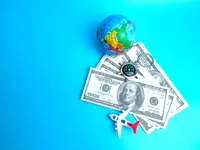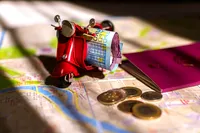Currency in Italy
What Currency Does Italy Use Now

One of the key things to know before you land in Italy is the nature of its currency. Italy, being a significant member of the European Union, started using Euro (€) as its official currency since 2002. Before then, the country used Italian Lira. Today, Euro, symbolised as € and coded as EUR internationally, is the common currency of 19 out of 27 EU countries.
Euro is subdivided into 100 units, each called a 'cent'. The paper money comes in denominations of 5, 10, 20, 50, 100, 200 and 500 Euros. Additionally, there are coins for 1, 2 and 5 Euro, and 1, 2, 5, 10, 20, and 50 cents.
Credit and Debit Cards in Italy

Italy has transitioned largely to a cashless society, where credit and debit cards are universally accepted. Most businesses, including hotels, restaurants, shops and even many small merchants, gladly accept cards.
Although Visa and MasterCard are the most widely accepted cards, American Express and Diners Club are also accepted at many places. However, it is always prudent to carry a little cash, as smaller establishments or those in remote areas may still require cash.
It is also recommended to inform your bank about your travel plans to avoid any sudden block on your card due to suspicious foreign transactions.
Using Cash in Italy
Even though Italy has extensively accepted card payments, cash is still prominently used, especially in small towns and villages. While purchasing from local markets, small eateries, for local transport, or tipping, cash in Euro might be required.
Do keep in mind that Italy has strict cash laws to prevent money laundering. It's important to know that individual transactions in cash over 3,000 Euros is prohibited by law. Additionally, if you're entering or leaving the EU and carrying €10,000 or more in cash regardless of denomination, you're legally required to declare it at customs.
ATMs in Italy

ATMs or Bancomats, as they're commonly known in Italy, are widely available at airports, train stations, and throughout the cities and towns. They give the option of conducting transactions in English and are relatively user-friendly.
Keep in mind, however, that you may be charged a fee by the bancomat, as well as by your home bank for foreign transactions. Consider checking with your bank before departure to understand the fees and to ensure that your ATM card will work overseas.
Bank Hours
Banks in Italy usually open around 8:30 AM and close in the early evening around 4:00 PM, Monday through Friday. However, the timings can sometimes vary, and many banks also close for a lunch break generally around 1:30 PM to 2:30 PM. On weekends, especially on Sundays, most banks are closed.
When planning your banking needs during your stay in Italy, it's wise to remember these timings. Online banking and ATMs, providing 24/7 services, often come to the rescue during non-banking hours.
In conclusion, as a visitor, you'll find that the monetary systems in Italy, from currency to banks, are well organised to cater for both cash and cashless needs. Whether you prefer to pay by card or need to rely on cash, you will find Italy's financial structure accommodating.
